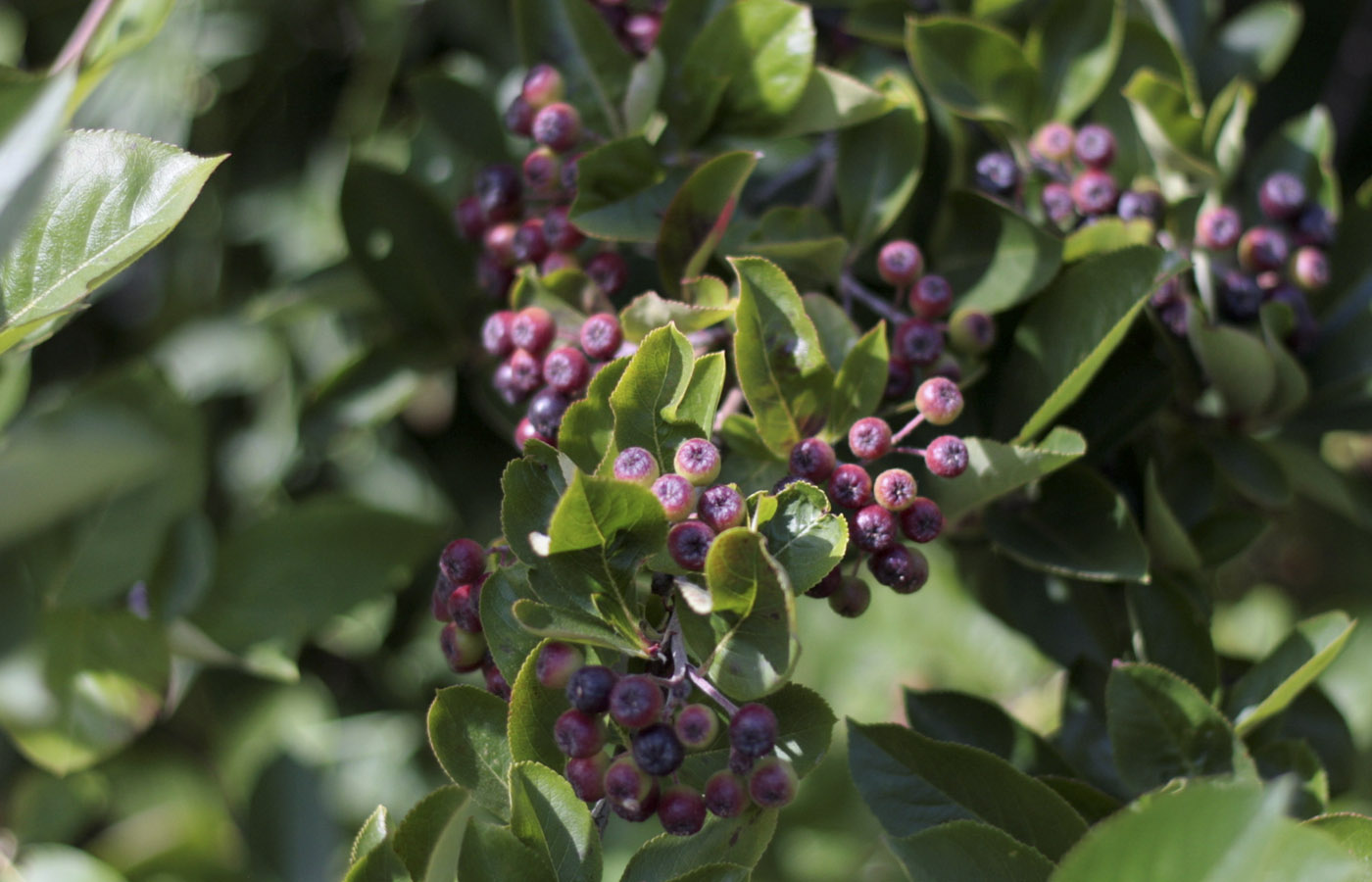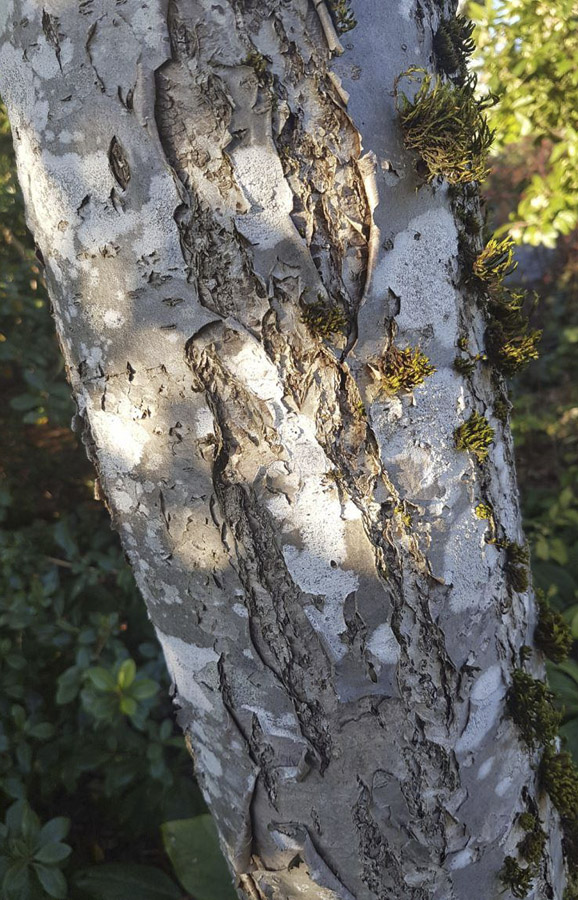For a self-guided tour, use Garden Explorer to locate plants featured in this month’s post. Select a tour in the drop-down menu.
The “heat dome” that descended upon us in late June seemed to move plants along in their maturation process (if it didn’t entirely burn them up). For flowering plants adapted to open, sunny conditions, both the short- and long-term effects will be minimal, though a number of plants with flowers that would normally start blooming in early August already reached that state in mid-July. Not to worry—there is plenty to see, including flowers, in UBC Botanical Garden in August.
Desert plants like yuccas can’t get enough of the heat. In the North American section of the E.H. Lohbrunner Alpine Garden, there are several yuccas and their relatives. The largest in our collection is a multi-stemmed Yucca schottii (hoary yucca) from the mountains of Mexico and New Mexico, which displays enormous flowerheads composed of large, ivory-white, bell-shaped flowers. These emerge from gigantic rosettes of fiercely spine-tipped leaves, atop massive stems. With each flowering, the growing tip dies, and new branches are formed behind the tip.
In the same bed, two other smaller yuccas are also flowering. Yucca constricta (Buckley’s yucca) has stiff, narrow, sharp-pointed leaves with unravelling, fibrous margins of silver-white threads. Yucca flaccida ‘Golden Sword’ has broader, droopier leaves that reflex downward toward the tips. One of several variegated selections of the commercial species, ‘Golden Sword’ is usually considered the brightest and best. Another late–summer bloomer is Epilobium canum (California fuchsia), of which there are numerous examples in the eastern and northern beds in this section. While the narrow flowers are typically orange or red—they are adapted to hummingbird pollination—Epilobium canum Pink Flower Selection is unusual in displaying pale pink flowers.
There is much to see in the Food Garden in summer (who doesn’t like looking at food?), especially since August brings out the colour in the ripening tomatoes. We grow a wide range of Solanum lycopersicum (tomato) cultivars every year, but this year we have some unusually colourful cherry tomatoes. Look for ‘Amy’s Apricot’, ‘Blush Tiger’, ‘Cerise Orange’, ‘Elfin’, ‘Fruit Punch’, ‘Green Grape’, ‘Helsing Junction Blue’, ‘Jaune Coeur de Pigeon’, ‘Napa Chardonnay’, ‘Petit Chocolate’, ‘Red Fig’, ‘Snow White’, and ‘Yellow Pear’.
Somewhat less conventional than a tomato is the black choke-berry, Aronia melanocarpa, which is as much celebrated for its beautiful, glossy black fruits as for their vitamin-rich (i.e., antioxidant) properties. The berries (technically pomes, like the fruits of apples and pears) are attractive in August, but not normally ripe before September. Even then, some processing is generally required before they are considered edible. Note that visitors are encouraged to look, but please do not pick or touch vegetables or fruits (or anything else) anywhere in the Botanical Garden. We are proud of the fact that produce from the Food Garden is harvested and distributed weekly to a local food bank for people who are less fortunate.
Several other species have colourful berries that are starting to show in August. One famously connected with UBC Botanical Garden is Sorbus pseudohupehensis, the pink-fruited mountain ash, which can be seen west of the main entrance to the Roseline Sturdy Amphitheatre. The berries (again, technically pomes) first appear white, dusted with crimson rouge. The berries are worth watching over time: as the weather turns colder in autumn, the red blush intensifies, and they become brighter and brighter pink.
In the 1980s, the Botanical Garden promoted a seedling of this species, which we named ‘Pink Pagoda’. At around the same time, others in the UK and in the USA promoted their own seedlings. ‘Coral Fire’, ‘November Pink’, ‘Rosea’ and ‘Rufus’ are all names also associated with this species. In the early 2000’s, however, we learned that this species only ever produces seedlings that are genetically the same as the parent plant. In other words, all seedlings are identical, and as such, cultivar names are superfluous.
Apomixis, the technical term for this breeding system, is more common than you might think. Probably half of the mountain ash species in the Garden are apomict. Many grasses, ferns, dandelions, brambles and hawthorns, are too. In Australia, S. pseudohupehensis is still widely sold as ‘Pink Pagoda’ and it remains a popular tree there.
Submitted by: Douglas Justice, Associate Director, Horticulture and Collections
- Solanum lycopersicum (assorted tomatoes) Photo by Adriana Lopez-Villalobos, Curatorial Coordinator.
- Yucca constricta Photo by Adriana Lopez-Villalobos, Curatorial Coordinator.
- Yucca constricta Photo by Douglas Justice, Associate Director (Horticulture & Collections).
- Yucca constricta Photo by Laura Caddy, Curator, E. H. Lohbrunner Alpine Garden.
- Yucca schottii Photo by Douglas Justice, Associate Director (Horticulture & Collections).
- Yucca constricta Photo by Laura Caddy, Curator, E. H. Lohbrunner Alpine Garden.
- Yucca schottii Photo by Laura Caddy, Curator, E. H. Lohbrunner Alpine Garden.
- Epilobium canum Photo by Laura Caddy, Curator, E. H. Lohbrunner Alpine Garden.
- Solanum lycopersicum (assorted tomatoes) Photo by Adriana Lopez-Villalobos, Curatorial Coordinator.
- Yucca flacida ‘Golden Sword’
- Yucca flacida ‘Golden Sword’
- Yucca schottii Photo by Adriana Lopez-Villalobos, Curatorial Coordinator.
- Aronia melanocarpa
- Sorbus pseudohupehensis Photo by Douglas Justice, Associate Director (Horticulture & Collections).
- Aronia melanocarpa Photo by Adriana Lopez-Villalobos, Curatorial Coordinator.
- Aronia melanocarpa Photo by Adriana Lopez-Villalobos, Curatorial Coordinator.
- Solanum lycopersicum (assorted tomatoes) Photo by Adriana Lopez-Villalobos, Curatorial Coordinator.
- Solanum lycopersicum (assorted tomatoes) Photo by Adriana Lopez-Villalobos, Curatorial Coordinator.
- Epilobium canum Photo by Adriana Lopez-Villalobos, Curatorial Coordinator.
- Epilobium canum Photo by Adriana Lopez-Villalobos, Curatorial Coordinator.
- Epilobium canum Photo by Adriana Lopez-Villalobos, Curatorial Coordinator.
- Epilobium canum Photo by Laura Caddy, Curator, E. H. Lohbrunner Alpine Garden.
- Epilobium canum Photo by Adriana Lopez-Villalobos, Curatorial Coordinator.
- Solanum lycopersicum (assorted tomatoes) Photo by Adriana Lopez-Villalobos, Curatorial Coordinator.
- Plant AcceSorbus pseudohupehensisssion
- Sorbus pseudohupehensis
- Yucca constricta Photo by Adriana Lopez-Villalobos, Curatorial Coordinator.



























